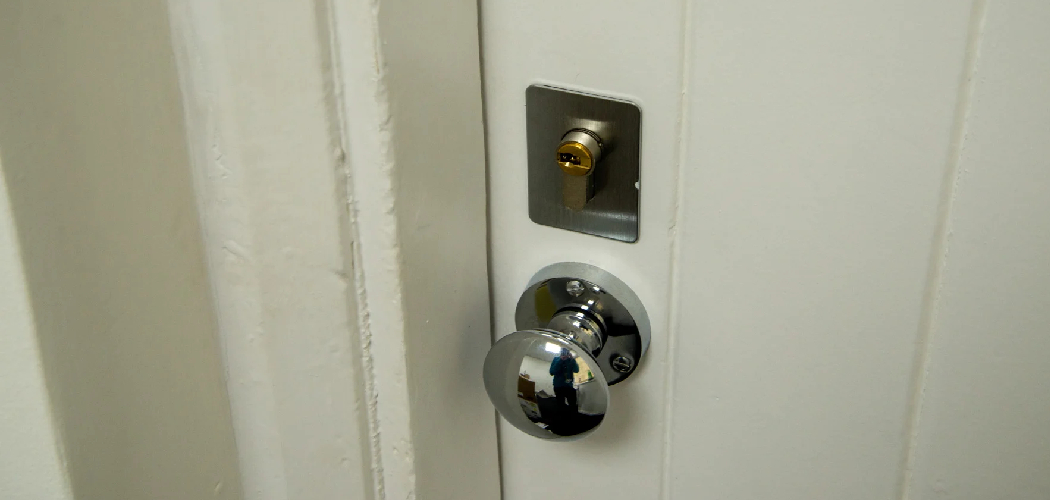Pocket doors are a great space-saving feature for any home, but they can pose some challenges when installing locks. Installing a lock on a pocket door is an essential step to ensure the privacy and security of any room. Whether it’s for a bathroom, bedroom, or office, having the ability to lock a pocket door can be crucial.
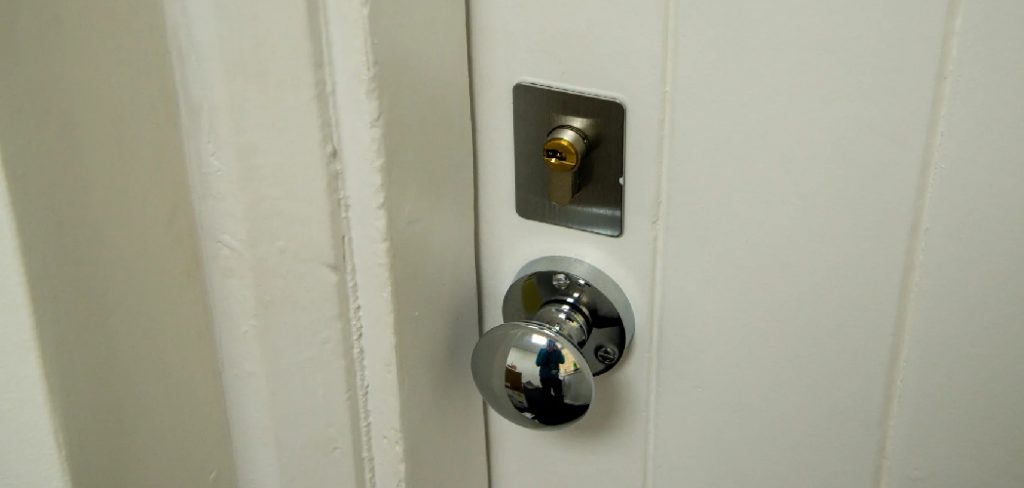
Unlike traditional hinged doors, pocket doors slide into the wall instead of opening outwards. You can’t simply install a regular lock on the door handle. However, with the right tools and techniques, installing a lock on a pocket door is a simple process. In this guide on how to install a lock on a pocket door, we will walk you through installing a lock on a pocket door.
Materials Needed
Before starting the installation process, gather all of the materials and tools you will need. This will save time and ensure a smooth installation.
- Pocket door lock kit
- Drill
- Chisel
- Screwdriver
- Tape measure
- Pencil or marker
8 Things to Know Before You Start
Before you get started, there are a few key things to keep in mind when installing a lock on a pocket door:
1. Pocket Doors Have Different Types of Locks
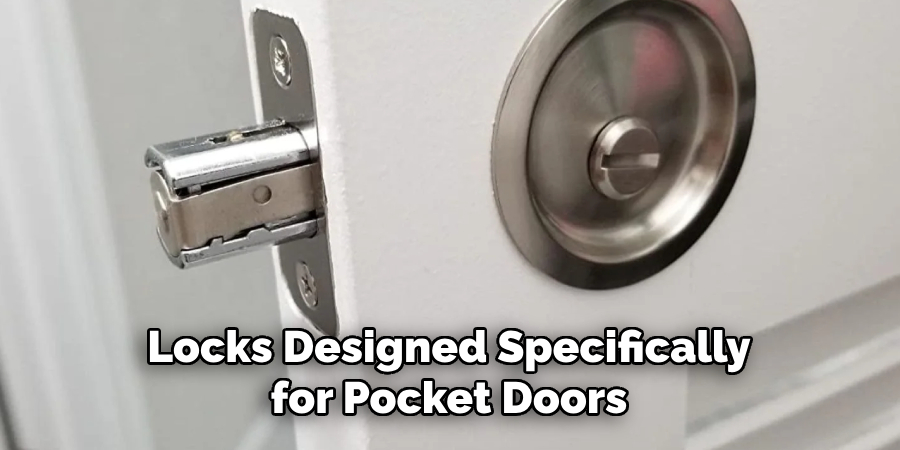
There are various types of locks designed specifically for pocket doors. Some options include pocket door edge pulls, flush-mounted pulls, and privacy locks. Make sure you choose a lock that is compatible with your door and meets your needs.
2. The Door Thickness Matters
Pocket doors come in different thicknesses depending on the type of wall they are installed in. Before purchasing a lock, measure the thickness of your door to ensure that the lock is compatible. If your door is thicker than average, you may need to purchase longer screws to secure the lock.
3. Consider the Placement of the Lock
You will need to decide where you want the lock to be placed on the pocket door. Typically, it should be installed at a comfortable height for easy access and should align with the corresponding strike plate on the door frame.
4. Check for Obstructions
Before drilling into the door, make sure there are no obstructions, such as electrical wires or pipes behind the intended lock placement. If there are, you may need to adjust the location of the lock.
5. Use a Template
Some pocket door lock kits come with templates that make installation easier. If your kit does not include one, you can create your own by tracing the outline of the lock onto a piece of cardboard and cutting it out.
6. Take Your Time
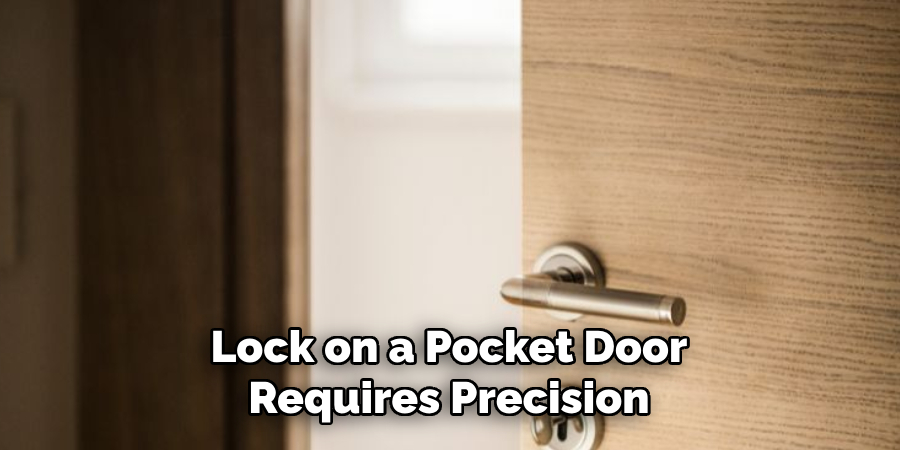
Installing a lock on a pocket door requires precision and patience. Take your time to ensure the measurements are accurate and the lock is installed correctly. When done correctly, the lock should operate smoothly and without any resistance.
7. Consider Hiring a Professional
If you are uncomfortable with DIY projects or do not have the necessary tools, it may be best to hire a professional to install the lock for you. This will ensure that it is installed correctly and functioning properly.
8. Test Before Finishing Installation
Before completing the installation, it is important to test the lock to make sure it is working properly. This will save you from any potential issues or repairs down the line. If it is not functioning as expected, double-check the measurements and installation to ensure everything is aligned correctly.
Installing a lock on a pocket door may seem daunting, but with the right tools and techniques, it can be done easily. Remember to carefully consider the type of lock you need, the thickness of your door, and the placement before beginning.
Take your time during the installation process, and always test the lock before considering the project complete. With these tips in mind, you can successfully install a lock on a pocket door and provide added security and privacy to your home.
10 Steps on How to Install a Lock on a Pocket Door
Step 1: Measure and Mark Placement
The first step is to measure and mark the placement of the lock on the edge of the door. Use a tape measure to determine the desired height and make sure it is aligned with the corresponding strike plate on the door frame.
Step 2: Create an Outline
Using a pencil or marker, trace around the lock template onto the edge of the door at your marked placement. If you do not have a template, use the lock itself as a guide and trace around it. While holding the lock in place, mark the center of the holes for the screws.
Step 3: Drill Holes
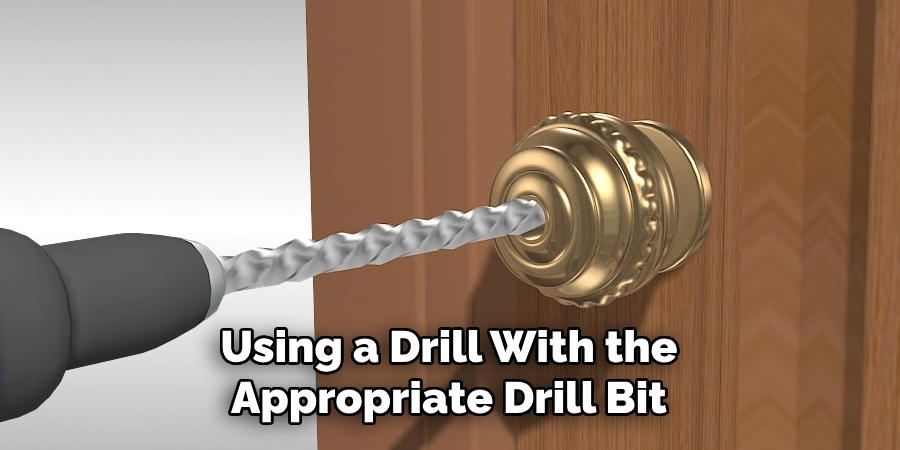
Using a drill with the appropriate drill bit, carefully drill holes at each of the marked points. Make sure to hold the drill straight and steady to avoid any unnecessary damage to the door. Softer materials like wood may not require pre-drilling.
Step 4: Cut Out Hole for Lock
Using a chisel, carefully cut out the hole for the lock to fit into. Use the outline or template as your guide, and make sure not to cut too deep. Once complete, test the lock to ensure it fits properly in the hole.
Step 5: Install Lock
Place the lock into the hole and secure it using screws. Make sure to tighten the screws securely but do not over-tighten, as this may damage the lock. Before continuing, test the lock to ensure it is functioning smoothly.
Step 6: Install Strike Plate
Using the template provided or by tracing around the corresponding strike plate, mark and drill holes into the door frame. Make sure to hold the drill straight and steady. Once complete, secure the strike plate using screws.
Step 7: Test Alignment
Close the pocket door and test the alignment of the lock and strike plate. If necessary, make any adjustments to ensure they align properly for the lock to function correctly. Other factors may affect alignment, such as the thickness of the door or obstructions behind the lock placement.
Step 8: Adjust Lock Mechanism
If your pocket door has a privacy lock mechanism, adjust it according to the manufacturer’s instructions. This will ensure that the lock engages and disengages properly when using the thumb turn or button.
Step 9: Install Door Pulls
If your pocket door requires a pull to open and close, install it according to the manufacturer’s instructions. This may include drilling holes for screws or using adhesive tape. And, if using flush-mounted pulls, make sure to install them before finishing the door with paint or stain.
Step 10: Test and Finish
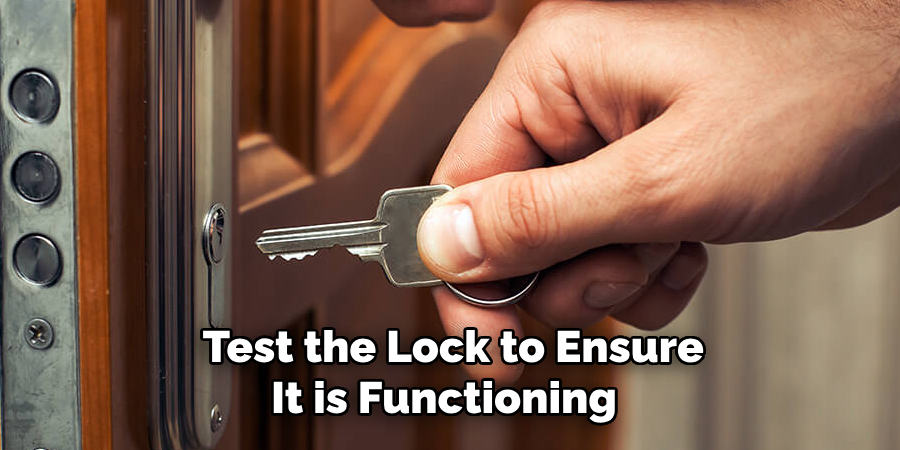
Before considering the project complete, test the lock to ensure it is functioning properly. This step may seem repetitive, but it can save you from any potential issues or repairs down the line. Once satisfied with the installation and functionality of the lock, finish the door with paint or stain to match your interior design.
By following these ten steps, you can successfully install a lock on a pocket door and provide added security and privacy to your home. Remember to carefully consider the type of lock you need, the thickness of your door, and the placement before beginning.
Take your time during the installation process, and always test the lock before considering the project complete. With these tips in mind, you can confidently install a lock on a pocket door and enhance your home’s security. So, whether you’re looking to add privacy to your bathroom or secure a room with valuable items, installing a lock on a pocket door is a simple yet effective solution.
8 Additional Tips for Pocket Door Lock Installation
Tip 1: Choose the Right Type of Lock
There are various types of pocket door locks available, including privacy locks, passage locks, and keyed entry locks. Consider your specific needs before choosing which type of lock to install. But keep in mind that some types may require professional installation.
Tip 2: Check the Door Thickness
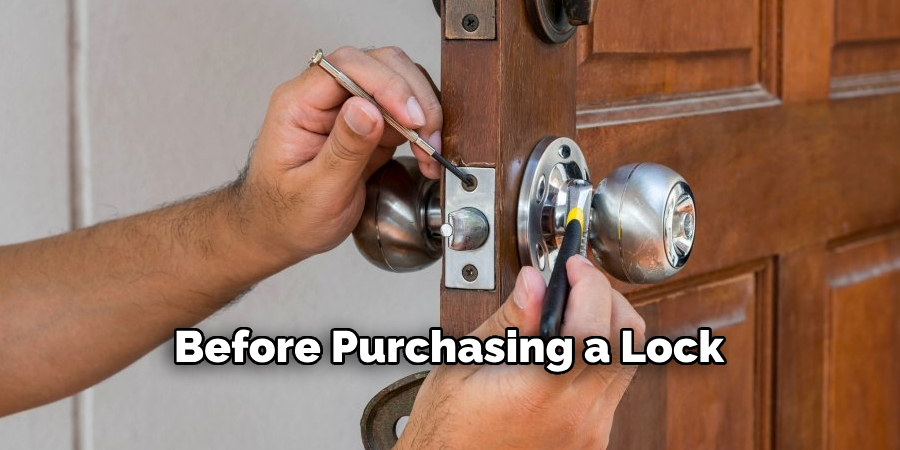
Before purchasing a lock, make sure to measure the thickness of your pocket door. This will ensure that you choose a compatible lock and prevent any potential issues during the installation process. If your door is thicker than standard, you may need to purchase an extended bolt or latch for the lock.
Tip 3: Consider the Door Material
The material of your pocket door may also affect the installation process and the type of lock needed. For example, wooden doors are easier to drill into compared to metal or glass doors. Some locks may only be compatible with certain types of materials, so make sure to check before purchasing.
Tip 4: Use the Right Tools
Having the right tools for the job can make all the difference in a successful installation. A drill with various drill bits, a chisel, a screwdriver, and a tape measure are some essential tools you may need. Also, consider using a level to ensure proper alignment.
Tip 5: Follow Manufacturer’s Instructions
Always follow the manufacturer’s instructions when installing a lock. Each type and brand may have specific guidelines for installation, so make sure to read them carefully before beginning. This will ensure that you do not damage the lock or door during the process.
Tip 6: Consider Recessed Locks
Recessed locks are a popular choice for pocket doors as they provide a clean and minimalistic look. These locks are installed within the door itself, making them less visible from the outside. However, they may require professional installation and additional preparation of the door.
Tip 7: Keep Track of Small Parts
During installation, there may be small parts, such as screws or strike plate components, that can easily get lost. To avoid this, keep track of all aspects and place them in a secure location while working on the installation. This will also make it easier to gather all necessary parts when it’s time to install.
Tip 8: Consider Hiring a Professional
If you are unsure about installing a lock on your own or if you have any doubts about the process, consider hiring a professional locksmith. They have the skills and expertise to ensure proper installation and can also provide advice on the best type of lock for your specific needs. Remember to do your research and choose a reputable locksmith with experience in pocket door locks.
With these additional tips on how to install a lock on a pocket door, you can further enhance your knowledge and ensure a successful pocket door lock installation. By carefully considering all factors and following proper installation techniques, you can effectively secure your pocket doors and provide added privacy to your home.
So, whether you choose to DIY or hire a professional, make sure to prioritize safety and functionality when it comes to installing locks on pocket doors. Always test the lock before considering the project complete, and enjoy the added security and convenience that a pocket door lock provides.
8 Things to Avoid When Installing a Lock on a Pocket Door
1. Rushing the Installation Process
Installing a lock on a pocket door requires time and attention to detail. Rushing through the installation process can lead to mistakes or improper alignment, resulting in a faulty lock.
2. Not Considering the Placement
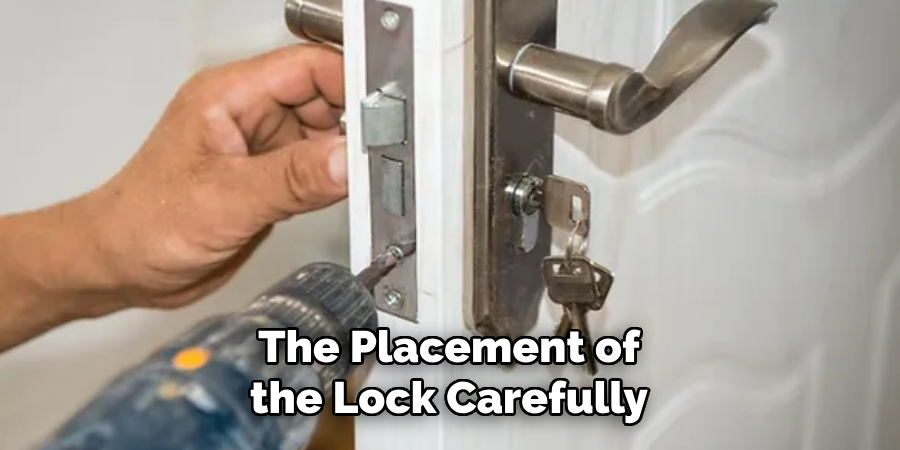
Before beginning the installation, make sure to consider the placement of the lock carefully. Placing it too high or low can make it difficult to access, while placing it in the center of the door may interfere with its functionality.
3. Using Incorrect Tools
Using incorrect tools can not only damage the lock and door but also pose a safety hazard. Make sure to use appropriate tools for each step of the installation process.
4. Neglecting to Test the Lock
Always test the lock before considering the project complete. This will ensure that it is functioning properly and provide peace of mind.
5. Not Following Manufacturer’s Instructions
Following the manufacturer’s instructions is crucial for a successful installation. Skipping steps or not following proper techniques can result in a faulty lock and potentially damage your pocket door.
6. Ignoring Door Thickness
Always make sure to check the thickness of your door before purchasing a lock. Neglecting this factor can result in compatibility issues and may require additional adjustments or parts.
7. Forgetting to Secure Small Parts
During installation, it’s important to keep track of small parts and secure them safely. Losing these parts can result in an incomplete installation or potential safety hazards.
8. Not Seeking Professional Assistance
If you are unsure about the installation process or have doubts, it’s best to seek professional assistance. Attempting to install a lock on your own without proper knowledge and experience can lead to mistakes and potentially damage your pocket door.
So, feel free to hire a professional if you feel overwhelmed or unsure about the process. With these tips in mind, you can successfully install a lock on your pocket door and enjoy added security and privacy in your home.
Frequently Asked Questions
Can I Install a Lock on Any Type of Pocket Door?
Yes, there are various types of locks available that can be installed on different types of pocket doors. However, make sure to check the compatibility and installation requirements before purchasing.
Do All Pocket Door Locks Require Professional Installation?
No, some pocket door locks can be easily installed by following the manufacturer’s instructions. However, if you are unsure or uncomfortable with the installation process, it is always best to hire a professional locksmith for proper installation.
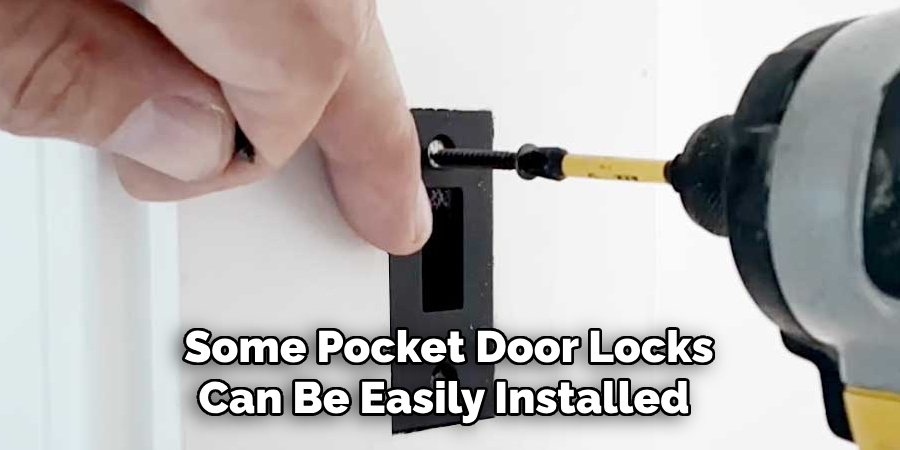
Can I Use Any Type of Door Pull on a Pocket Door?
You can use any type of door pull on a pocket door as long as it does not interfere with the lock’s functionality. Some waves may have specific requirements for door pulls, so make sure to check before purchasing.
Do I Need to Consider the Door Swing when Installing a Pocket Door Lock?
Yes, the direction in which your pocket door swings will affect the installation and functionality of the lock. Make sure to choose a lock that is compatible with your door swing and follow proper installation techniques.
Can I Install a Lock on Both Sides of the Pocket Door?
Yes, some locks can be installed on both sides of the pocket door for added security. However, make sure to properly align and test both locks before considering the project complete. Also, consider if the wave on one side may interfere with the functionality of safety on the other side before installation.
Are There Any Additional Tips for Maintaining Pocket Door Locks?
To maintain your pocket door lock, regularly clean and lubricate it according to the manufacturer’s instructions. Avoid using harsh chemicals or force when operating the safety to prevent damage.
If you notice any issues, such as difficulty locking or unlocking, contact a professional locksmith for assistance. Additionally, consider periodically checking and tightening screws or bolts to ensure the lock is securely attached to the door. With proper maintenance, your pocket door lock can provide long-lasting security and convenience.
Are Pocket Door Locks More Convenient Than Traditional Door Locks?
Yes, pocket door locks offer a convenient and space-saving option for locking doors. Unlike traditional door locks, they do not require a separate key or handle on both sides of the door. This makes them ideal for small spaces and rooms where privacy is needed, such as bathrooms or bedrooms.
Additionally, pocket door locks can be easily opened and closed with one hand, making them a convenient choice for busy households. So, if you are looking for a practical and efficient way to secure your pocket doors, consider installing a pocket door lock. With proper installation and maintenance, it can be a valuable addition to your home.
Conclusion
Installing a lock on a pocket door may seem daunting at first, but with the right tools and knowledge, it can be a simple and straightforward process. By following these tips on how to install a lock on a pocket door, you can ensure proper installation and functionality of your pocket door lock. Remember to always prioritize safety and carefully consider the type of lock that best suits your needs.
Whether you choose to DIY or hire a professional, with the proper steps, you can effectively secure your pocket doors and enjoy added privacy in your home. So, go ahead and confidently tackle your pocket door lock installation project. Your improved security and convenience will be worth the effort!
